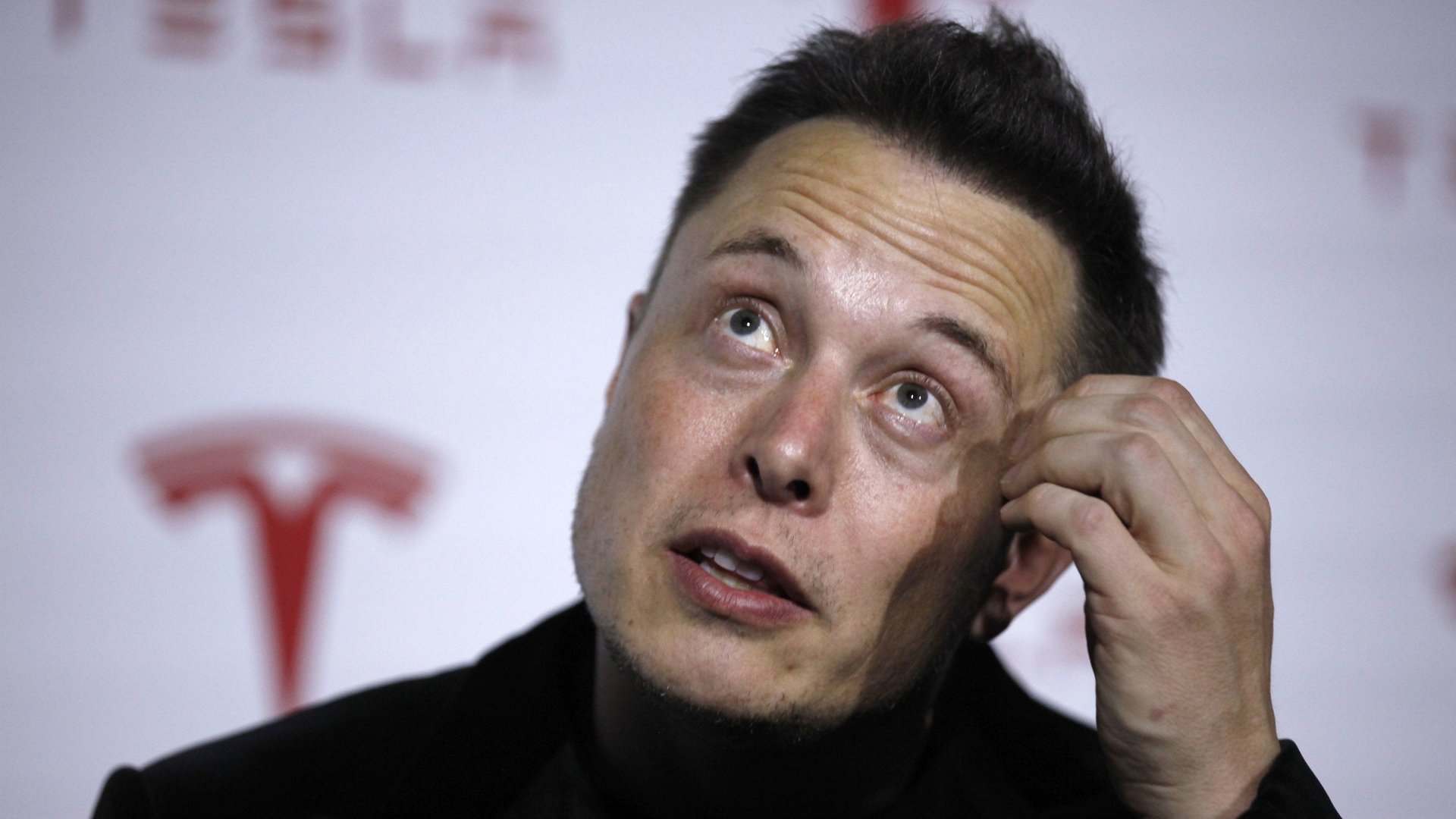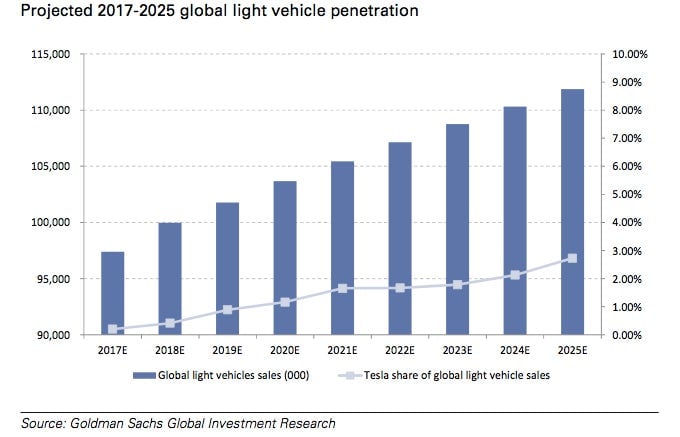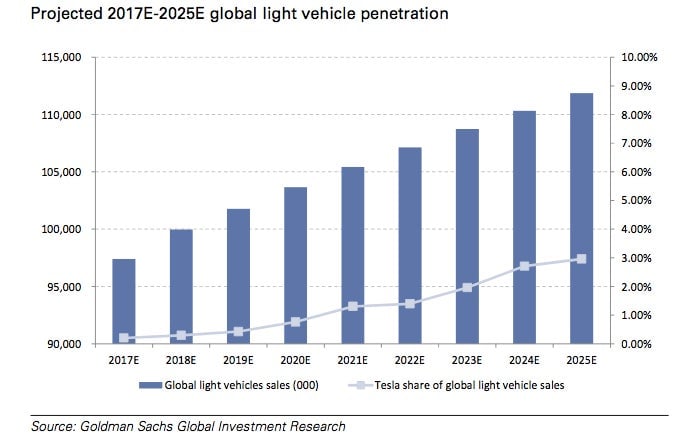What the world will look like if Elon Musk becomes the next Henry Ford
Analysts are coming up with increasingly entertaining ways to justify Tesla’s enormous valuation and lofty share price, and who are we to disagree with them?


Analysts are coming up with increasingly entertaining ways to justify Tesla’s enormous valuation and lofty share price, and who are we to disagree with them?
Recently, Morgan Stanley outlined an interesting thesis on how Tesla could become a serious player in the energy market, through the production of its own batteries, and because its cars could be used for power storage. Today, it’s Goldman Sachs’s turn. The investment bank’s analysts are similarly upbeat on the electric vehicle maker’s ability to reshape everything, outlining scenarios where CEO Elon Musk could replicate the success of some truly disruptive entrepreneurs, namely Steve Jobs and Henry Ford.
Comparing smartphones to electric cars might seem ridiculous, but Goldman says its analysis has been adjusted to reflect the different life cycles of these two products. And if the sales of Tesla cars were to grow at the same rate as the iPhone, it would be selling 3.1 million units a year by 2025—up from 22,000 last year —which would be 65.5% of all electric vehicles, or about 2.7% of all light vehicle sales, according to the analysis.

Even more optimistic is a scenario where Tesla is able to replicate the success of the Model T Ford. This scenario assumes that growth in the penetration of long range electric vehicles will track growth in penetration of US cars a century ago. From that, Goldman envisages a scenario where there are a total of 6 million electric vehicles sold in 2025. Tesla would capture 55% of the market, selling 3.3 million units, or about 5.4% of total auto sales globally that year.

Under either scenario, Tesla would still only be the ninth biggest automaker on the planet, behind Volkswagen, Toyota, Renault, General Motors Nissan, Hyundai, Ford and Honda. But also, under both of these scenarios, Tesla would be producing many more vehicles than it currently aims to (it recently said it should be able to produce 500,000 cars a year by 2020).
Of course, an exercise like this involves some pretty heroic assumptions—for instance, that nothing goes wrong with the company’s ambitious new battery factory, and that it can ramp up production rapidly and smoothly. And the two scenarios above are on the optimistic side; Goldman’s “base case” is that only 284,000 units a year will be selling by 2020, and 764,000 by 2025.
But the blue-sky scenarios are still fun to think about. Elon Musk is often described as the next Steve Jobs, but maybe it’s Henry Ford that he should aspire to be.